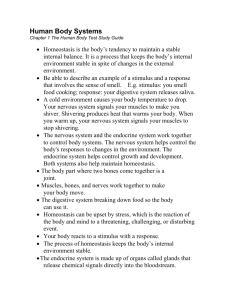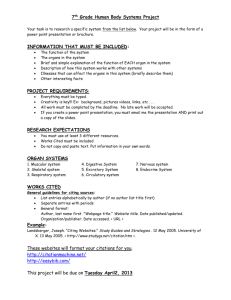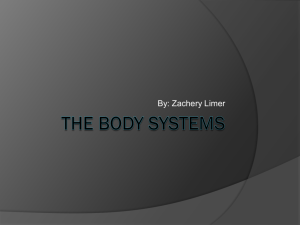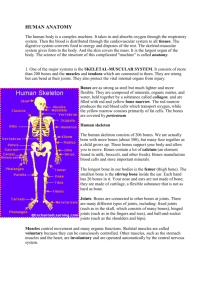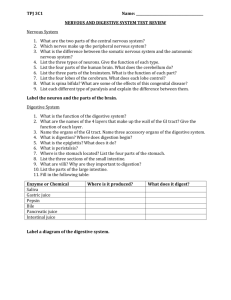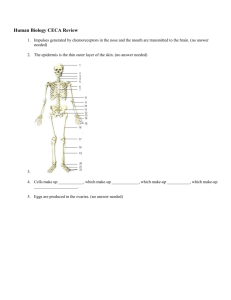HUMAN ANATOMY FSpS
advertisement
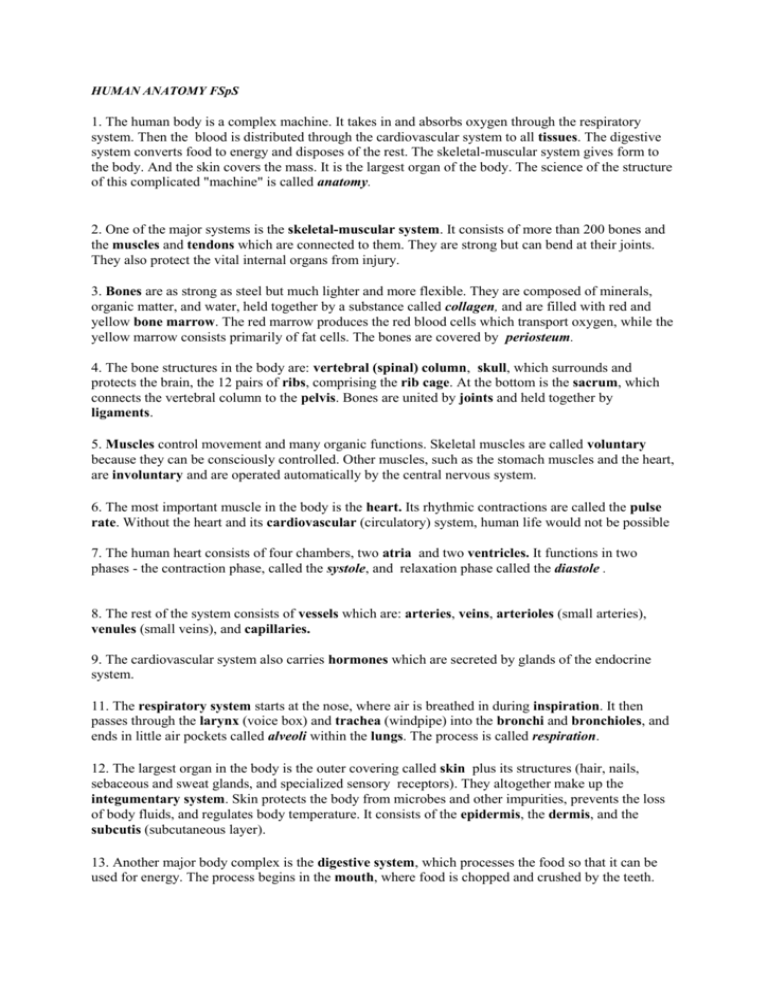
HUMAN ANATOMY FSpS 1. The human body is a complex machine. It takes in and absorbs oxygen through the respiratory system. Then the blood is distributed through the cardiovascular system to all tissues. The digestive system converts food to energy and disposes of the rest. The skeletal-muscular system gives form to the body. And the skin covers the mass. It is the largest organ of the body. The science of the structure of this complicated "machine" is called anatomy. 2. One of the major systems is the skeletal-muscular system. It consists of more than 200 bones and the muscles and tendons which are connected to them. They are strong but can bend at their joints. They also protect the vital internal organs from injury. 3. Bones are as strong as steel but much lighter and more flexible. They are composed of minerals, organic matter, and water, held together by a substance called collagen, and are filled with red and yellow bone marrow. The red marrow produces the red blood cells which transport oxygen, while the yellow marrow consists primarily of fat cells. The bones are covered by periosteum. 4. The bone structures in the body are: vertebral (spinal) column, skull, which surrounds and protects the brain, the 12 pairs of ribs, comprising the rib cage. At the bottom is the sacrum, which connects the vertebral column to the pelvis. Bones are united by joints and held together by ligaments. 5. Muscles control movement and many organic functions. Skeletal muscles are called voluntary because they can be consciously controlled. Other muscles, such as the stomach muscles and the heart, are involuntary and are operated automatically by the central nervous system. 6. The most important muscle in the body is the heart. Its rhythmic contractions are called the pulse rate. Without the heart and its cardiovascular (circulatory) system, human life would not be possible 7. The human heart consists of four chambers, two atria and two ventricles. It functions in two phases - the contraction phase, called the systole, and relaxation phase called the diastole . 8. The rest of the system consists of vessels which are: arteries, veins, arterioles (small arteries), venules (small veins), and capillaries. 9. The cardiovascular system also carries hormones which are secreted by glands of the endocrine system. 11. The respiratory system starts at the nose, where air is breathed in during inspiration. It then passes through the larynx (voice box) and trachea (windpipe) into the bronchi and bronchioles, and ends in little air pockets called alveoli within the lungs. The process is called respiration. 12. The largest organ in the body is the outer covering called skin plus its structures (hair, nails, sebaceous and sweat glands, and specialized sensory receptors). They altogether make up the integumentary system. Skin protects the body from microbes and other impurities, prevents the loss of body fluids, and regulates body temperature. It consists of the epidermis, the dermis, and the subcutis (subcutaneous layer). 13. Another major body complex is the digestive system, which processes the food so that it can be used for energy. The process begins in the mouth, where food is chopped and crushed by the teeth. 14. The food then passes through the esophagus in the stomach. From there the food passes into small intestine, where it is absorbed. What cannot be absorbed is passed out through the large intestine as feces. Liquid wastes are eliminated through the urinary ystem. They are picked up by the blood and removed by the kidneys. From there they pass through the ureter, bladder, a urethra, and are excreted from the body as urine. 15. Closely associated with the urinary system is the reproductive system, by which human life is carried on to future generations. 16. The nervous system controls all other systems and bodily movements. 17. The nervous system is divided into the central nervous system (the brain and spinal cord) and the peripheral nervous system, which consists of the nerves that connect muscles and sensory organs with the central nervous system. 18. The brain is not only the most important component of the nervous system; it is also the controller of all bodily activities, thoughts, and emotions. Feedback: Give names of all the systems in human body. What are some important functions of the skin? Which tissue enables the body to move? Which system enables breathing? What are its organs? How is the nervous system divided? Give the name of the parts of digestive system.



